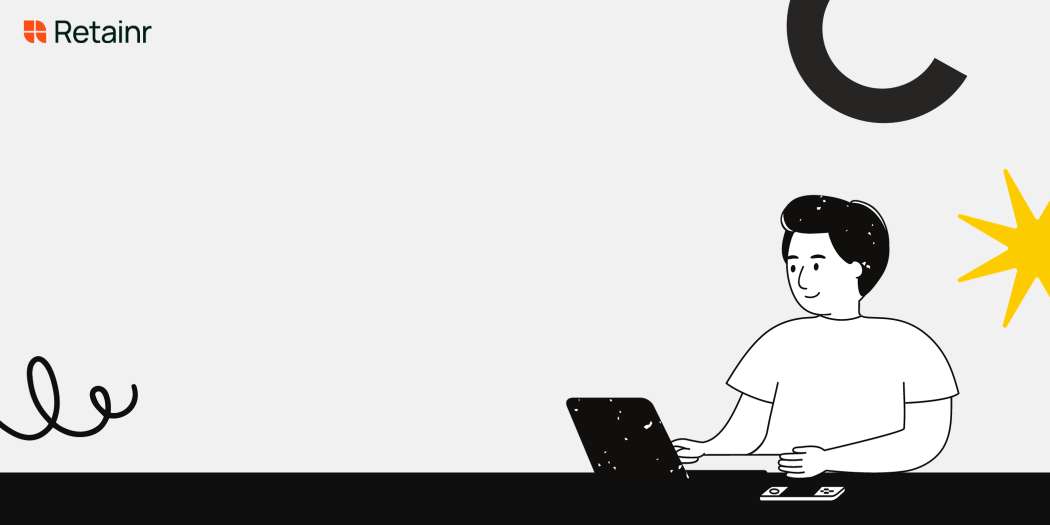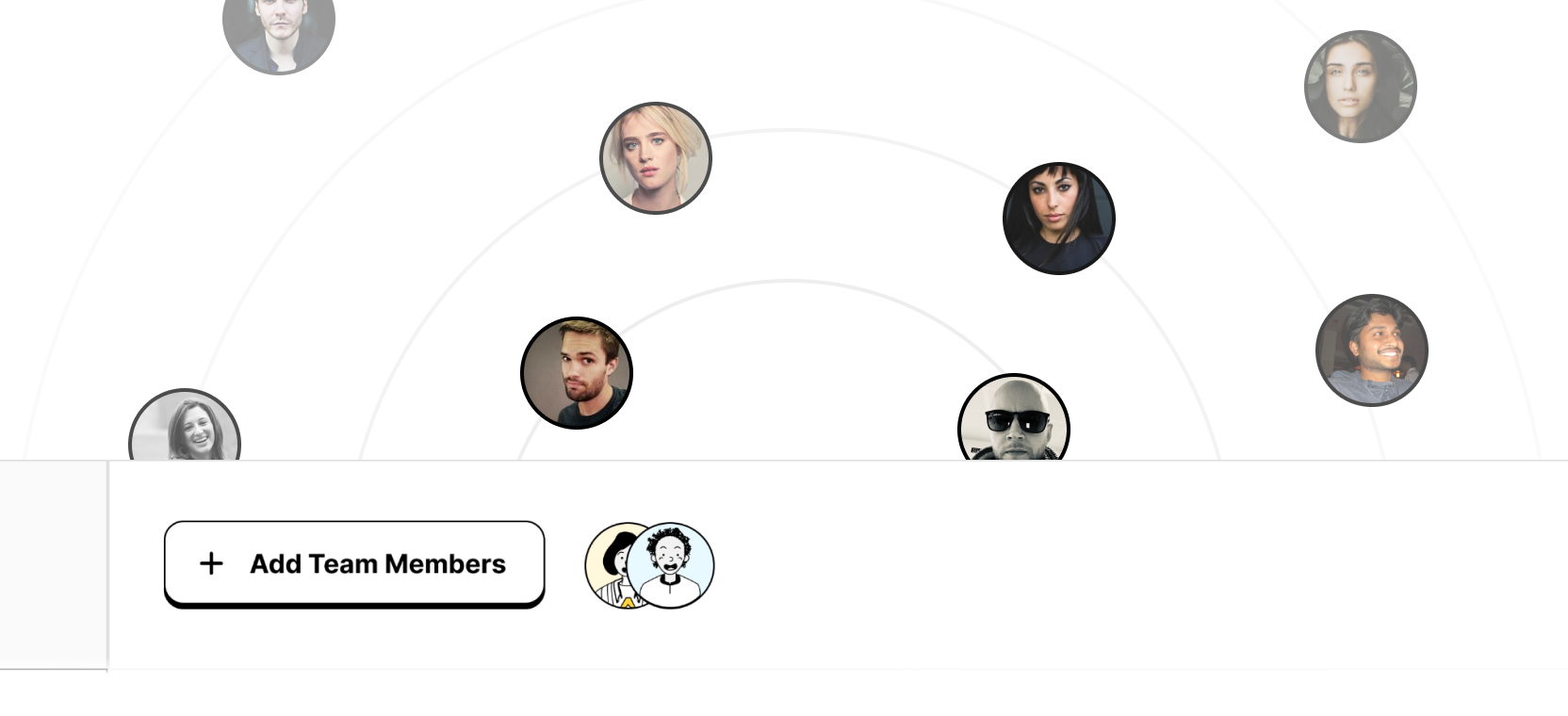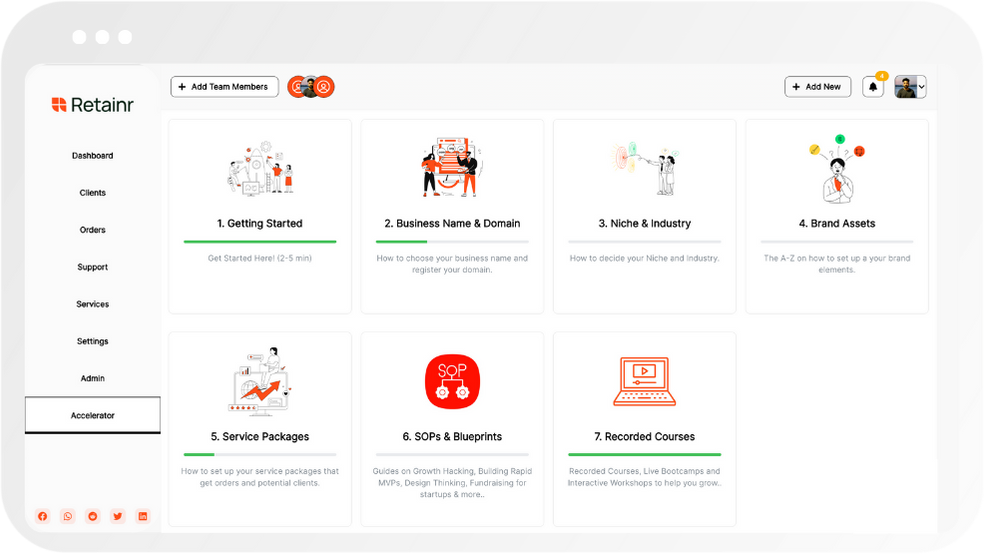
How to Create a Social Media Calendar to Plan Your Content
Build with Retainr
Sell your products and services, manage clients, orders, payments, automate your client onboarding and management with your own branded web application.
Get Started1. What is a social media calendar and why is it important for planning content?
What is a Social Media Calendar?
A social media calendar is an essential tool used to create, schedule, and post content on various social media platforms. This could take the form of a spreadsheet, an app, or a software program that allows you to see your content plan visually, typically by day, week, month, or even year. A comprehensive social media calendar includes details such as:
- What content will be posted
- When it will be posted
- Which social media platforms it will be posted on
- Who will be responsible for posting the content
Importance of a Social Media Calendar for Planning Content
A social media calendar plays a pivotal role in planning your content as it offers multiple benefits. Firstly, it helps drive a well-orchestrated content strategy by ensuring consistent posting, which is key to growing your online presence. Secondly, it aids in maintaining a balanced and varied content mix, preventing your feed from becoming too monotonous or sales-oriented. Thirdly, it permits collaborative planning and offers your team clear visibility into your social schedule.
| Benefits | Description |
|---|---|
| Consistent Posting | Having planned posts ready to go ensures that your brand stays visible to your audience. |
| Varied Content | Switching between different types of media keeps your audience engaged and interested. |
| Team Collaboration | A centralized calendar allows for transparency and cooperation within your content team. |
Above all, using a social media calendar can save you time and resources, allowing you to focus on building engagement, and delivering quality and timely content to your audience.
2. How do I create a social media content calendar?
Steps to Create a Social Media Content Calendar
Creating a social media content calendar involves several steps. Firstly, define your goals for what each social platform should achieve. Secondly, conduct a social media audit of your existing content. This will uncover what content performs well and what needs improvement. Lastly, decide on a frequency of posting and build it into your calendar.
- Define your social media goals
- Conduct a social media audit
- Decide on a posting frequency
Detailed Plan of a Social Media Content Calendar
A well-structured social media content calendar should include the following information: the date and time of the post, the content of the post, the social media platform, and the targeted audience. Here's a simple example of a table structure for your social media calendar:
| Date & Time | Content | Platform | Target Audience |
|---|---|---|---|
| Oct 1, 15:00 | Product Launch Post | Facebook, Instagram | Millennials |
| Oct 3, 10:00 | Blog Post Share | Twitter, LinkedIn | B2B Prospects |
Using Tools for Social Media Calendar
There are several tools available to help create and manage your social media content calendar. These platforms can help to automate postings, provide analytics, and allow for team collaboration. Examples of these include CoSchedule, Hootsuite, Buffer, and Sprout Social. Each tool has its own set of features, so choose the one that meets your unique social media planning needs.
- CoSchedule - Content planning and social media promotion in one place
- Hootsuite - Allows for scheduling posts ahead of time and provides analytics
- Buffer - Simple and clean design with powerful automation capabilities
- Sprout Social - Comprehensive solution for team collaboration and social listening
3. What are the key elements to include in a social media calendar?
Key Elements of a Social Media Calendar
A social media calendar requires a thorough preparation that integrates several crucial elements.
- The first element is Content. Content forms the essence of your posts. This includes articles, videos, images, polls, or any other form of content you want to share.
- Secondly, include Time and Dates for each post.
- Thirdly, note the Social Media Platform you intend to post on since different platforms may require varying content formats.
- Fourthly, maintain details of the post status. This will indicate whether the post is in the draft stage, under review or scheduled for posting.
Format of a Social Media Calendar
It's important to display these elements in an organized manner. A table can be the ideal way to structure your calendar. Here is an example of how you could structure your social media calendar:
| Date | Content | Platform | Status |
|---|---|---|---|
| March 5, 2022 | Blog Post about lifestyle tips | Facebook, Instagram | Scheduled |
| March 10, 2022 | Image post of new product | Twitter, LinkedIn | Under Review |
Maintaining a Social Media Calendar
Once the social media calendar's framework has been established, continuous maintenance becomes essential to keep the schedule on track.
- Ensure to regularly Update the calendar with fresh content ideas and new posting dates.
- Remember to Review and Adjust the calendar based on the performance metrics of previous posts.
- And most importantly, make sure to incorporate feedback received from your audience to continuously improve your content.
4. Can you suggest some tools or templates for creating a social media calendar?
Top Tools for Creating a Social Media Calendar
There are several tools available that can help you simplify the process of creating a social media calendar. These tools not only streamline the process but also offer useful features such as analytics, scheduling, and collaboration. Some of them include:
- Hootsuite: This is a complete social media management tool that allows you to create a comprehensive content calendar, schedule posts, and track your performance.
- Buffer: This tool offers post scheduling as well as analytics. It also includes a convenient calendar view for planning content.
- CoSchedule: CoSchedule is a highly streamlined and efficient content scheduling tool that offers a unified calendar for all your social media platforms.
- ContentCal: This tool provides a visual calendar setup and approval workflow in addition to the scheduling and analytics capabilities.
Suggested Templates for a Social Media Calendar
Templates can be a great starting point when creating a social media calendar. They provide a structured format that you can use to plan your content effectively. Here are some templates you can consider:
| Template | Description |
|---|---|
| HubSpot's Social Media Content Calendar | This template provides a basic structure for a weekly social media content plan including the type of content, post date, and status. |
| Hootsuite's Social Media Calendar Template | This is a straightforward template organized by week and social media platform. It also includes a space for tracking analytics. |
| CoSchedule's Social Media Editorial Calendar Template | This template provides a monthly view of your social media content with the ability to track key metrics. |
Free Online Templates for Social Media Calendars
There are also free online repositories that offer various templates for your social media calendar. These sites have a large selection that accommodates different needs and styles:
- Canva: Known for graphic design, Canva has a variety of social media calendar templates that are visually appealing and easy to use.
- Smartsheet: Smartsheet offers several free template options including a social media content calendar and a social media analytics tool.
- Google Sheets: Google offers a simple and accessible option. You can use one of the existing templates or create your own custom calendar.
5. How far in advance should I plan my social content using the calendar?
Planning Timeframe for Social Content
Deciding how far in advance to plan your social content using a calendar can significantly depend on your content, marketing strategy, and audience engagement. However, a commonly recommended timeframe is a quarter (3 months). This timeframe provides a balance between planning ahead and maintaining flexibility for timely or trending posts.
Benefits of a Quarterly Social Media Calendar
- Consistent Posts: Having a quarterly plan ensures that there’s no gap in your social media presence.
- Relevant and Time-bound Content: You can synchronize your content with holiday seasons, sales period, or any important events relevant to your brand.
- Flexibility: Planning the content three months at a time gives room for adjustments and changes according to trends, the political climate, or your business needs.
- Workload Management: It allows for better distribution of tasks between team members, outsourcing, and scheduling posts on automation tools.
While a quarterly plan works best for most brands, you should tweak it according to your individual requirements and resources.
Example of a Monthly Breakdown in a Social Media Calendar
| Week | Content | Platform |
|---|---|---|
| 1 | Introduction to New Products | Facebook, Instagram |
| 2 | Promotional Post | Twitter, LinkedIn |
| 3 | Special Offer | Instagram, Pinterest |
| 4 | User-generated Content | Facebook, Twitter |
This table presents an example of content distribution across various platforms over a month. However, one should adjust this as per their analytics and audience behavior.
6. How can I use a social media calendar to track the performance of my content?
Using a Social Media Calendar for Performance Tracking
Utilizing a social media calendar serves as an ideal tool for evaluating the effectiveness of your content. It plays a key role in measuring the analytics, engagement, and overall performance of each piece of content you publish. This can be achieved through the following steps:
- Monitoring engagement rates: By inputting data concerning likes, shares, comments etc., you can better determine which pieces of content are provoking the most response.
- Assessing reach: Your calendar can also help you track the reach of your posts beyond your immediate followers.
- Analyzing peak times and dates: Noting the times and dates of successful posts can offer insight into when your target demographic is most active. This will help you identify the best posting times to maximize engagement.
In addition to the above, tracking the performance can be more organized if you maintain a table where you can jot down relevant statistics for each post relating to your social media channels. Below is a reference table to help you structure yours:
| Date | Post | Platform | Likes | Shares | Comments | Reach |
|---|---|---|---|---|---|---|
| XX/XX/XXXX | Post Name/Topic | Platform Name | Number | Number | Number | Number |
7. How can a social media calendar help improve my content strategy?
Benefits of a Social Media Calendar
A social media calendar can significantly improve your content strategy in multiple ways. Here are some key benefits:
- Consistency: Consistent posting is crucial in building your social media presence and reputation. A calendar helps in maintaining the frequency of your posts across different platforms.
- Planning: A calendar provides a visual overview of what is to be posted and when, aiding in planning and organizing content effectively.
- Quality: When you plan your content, you naturally end up improving the quality as you have enough time to research, create, revise and perfect your content.
Monitoring Performance
Another major function of using a social media calendar lies in the ability to track and monitor the performance of your content strategy. A table can be created to highlight trends and insights from your data. Here is a simple example of how this could look:
| Date | Platform | Post | Likes | Shares | Comments | Reach |
|---|---|---|---|---|---|---|
| 10/10/2022 | Blog post | 150 | 80 | 25 | 5000 |
Unified Content Strategy
Finally, having a social media calendar ensures that your team is on the same page regarding your content strategy. It provides a transparent overview of the plan, roles, and responsibilities, helping coordinate efforts across multiple platforms, and enabling you to avoid last-minute hassles. Here are some of the ways a calendar ensures a unified strategy:
- Synchronized Themes: You can plan out specific themes or topics to focus on in your content across all platforms.
- Effective Collaboration: Team members can view and add to the plan, ensuring that everyone knows what is coming up and who is responsible for what.
- Delegation: You can make the best use of your team's talents by planning and delegating tasks upfront, rather than scrambling at the last minute.
8. How often should I update my social media calendar?
Frequency of Social Media Calendar Updates
The frequency of updating your social media calendar can greatly impact the effectiveness of your content strategy. Ideally, you should review and revise your calendar on a weekly or monthly basis. This gives you an opportunity to react to any unexpected changes in social media trends or business goals. Additionally, scheduling regular check-ins will also help you stay on top of your content creation schedule and ensure that upcoming posts are ready for publication.
- Daily: Check for any urgent changes or updates, respond to comments, and review post performance.
- Weekly: Analyze the performance of past week’s posts, prepare posts for the coming week, and adjust any scheduling based on trends or changes.
- Monthly: Plan and schedule posts for the upcoming month, assess the overall performance of posts in the last month, and adjust the following month’s content strategy based on those results.
Social Media Calendar Update Process
One effective method to manage and streamline your update process is by conducting it in three main steps: analysis, planning, and scheduling.
| Stage | Tasks |
|---|---|
| Analysis | Review social media metrics and evaluate the performance of previous posts. |
| Planning | Based on your analysis, brainstorm new content ideas and topics for the upcoming week or month. |
| Scheduling | Add the planned content to your calendar and schedule the posts for specific dates and times. |
By regularly updating your social media calendar, you can ensure that your content strategy remains effective and tailored to your audience's interests and engagement patterns.
9. How can I incorporate holidays and important dates in my social media calendar?
Incorporating Holidays and Important Dates in Your Social Media Calendar
Utilizing holidays and important dates in your social media calendar is a resourceful way to make your content relevant and engaging. Begin by identifying the key dates relevant to your audience and brand. These can include public holidays, industry-specific events, or dates that are significant to your business. For example:
- Public Holidays (like Christmas, Easter)
- Celebration Days (like Father's Day, Valentine's Day)
- National Days (like National Pizza Day, National Book Day)
- Major Events (like Olympics, World Cup)
- Industry-specific days (like Tech Day for tech companies)
- Company-specific dates (like company's establishment day, product launch anniversary)
After identifying these strategic dates, they can be plotted into your social media calendar. A simple way to do this is to use a table representation.
| January | February | March |
|---|---|---|
| New Year' Day posts National Tech Day campaign | Valentine's Day promotion President's Day sale | Women's Day posts National Reading Month campaign |
Keep in mind, it's not about just acknowledging these dates but also tailoring brand's message around them. This might involve running special offers, arranging themed promotions, or publishing related content that aligns these dates with your brand values. The ultimate goal is to create content that resonates with your audience and enhances the brand-customer relationship.
10. What are some tips for efficiently managing a social media content calendar?
Tips for Efficiently Managing a Social Media Content Calendar
Efficient management of a social media content calendar requires strategic planning, constant update, and delegation. First, it is pivotal to understand the platforms you are using and the best times to post on each for maximum engagement. Utilize analytics tools to determine when your audience is most active and plan your posts accordingly.
Below are some tips for effectively managing your social media content calendar:
- Prepare content in advance: Draft and schedule content ahead. This helps to avoid last-minute rush and ensures consistency in posting.
- Be adaptable: Although planning is important, it is equally crucial to keep some room for spontaneity to engage with trending topics or timely events.
- Use a content calendar tool: Use tools like Hootsuite, Buffer, or Sprout Social to easily schedule and autmate posts.
- Delegate tasks: If you're managing multiple platforms, delegate and assign tasks to your team, ensuring every platform is well handled.
- Regular audits: Regularly audit your content calendar to ensure the quality, relevance, and effectiveness of your posts. Always analyze and adapt based on results.
It might be helpful to layout the main elements in a social media content calendar in a table for easy understanding. A generic framework is demonstrated below:
| Day | Platform | Content | Time |
|---|---|---|---|
| Monday | Blog post link | 10 AM | |
| Tuesday | Infographic | 1 PM |
Conclusion
Summary
Creating a social media calendar is an effective way to plan your content, increase brand engagement, and manage different social media platforms efficiently. It helps you organize your tasks, schedule posts, track performance, and adjust your strategy.
There are sequential steps you can follow to create a social media calendar. Start by conducting a social media audit to identify your most effective platforms. Plan on how often you wish to post content on each social media site. Next, generate content ideas that align with your goals and your audience's interests. Create the content and organize it on a calendar or spreadsheet, consistent with your brands' themes and styles. Finally, automate posting using a reliable social media scheduling tool and remember to track your performance and adjust your strategy based on outcomes.
The Role of Retainr.io
To streamline these processes, consider utilizing Retainr.io, a whitelabel software designed to manage clients, orders, payments, and content effectively and seamlessly under your own branded app. The platform offers tools for scheduling social media posts and managing client orders and payments, drying your workflows, and allowing you to focus more on content creation.
With Retainr.io, you can plan, collaborate, and publish your posts, manage your clients and orders in one place, making it the perfect asset in maintaining a consistent and engaging presence on social media platforms. So if you're ready to take your social media content planning to the next level, visit www.retainr.io today.
Boost Your Agency Growth
with Retainr Accelerator
Uncover secrets, strategies, and exclusive blueprints to take your agency's growth to the next level — from marketing insights to effective presentations and leveraging technology.

SOPs, Cheatsheets & Blueprints
Leverage 50+ SOPs (valued over $10K) offering practical guides, scripts, tools, hacks, templates, and cheat sheets to fast-track your startup's growth.
Connect with fellow entrepreneurs, share experiences, and get expert insights within our exclusive Facebook community.
.jpg)

Join a thriving community of growth hackers. Network, collaborate, and learn from like-minded entrepreneurs on a lifelong journey to success.

Gain expertise with recorded Courses, Live Bootcamps and interactive Workshops on topics like growth hacking, copywriting, no-code funnel building, performance marketing and more, taught by seasoned coaches & industry experts.

.jpg)

.jpeg)


